|
|
Post by madpatty on Apr 27, 2015 21:57:54 GMT -5
Hi Chris,
Thanks mate for the credit....actually i am enjoying R&D a lot.
Cheers,
Patty
|
|
|
|
Post by madpatty on Apr 30, 2015 3:12:49 GMT -5
Hi Guys,
I want to experiment with an afterburner....
I have some lengths of 5" and 6" diameter pipes....
Can anybody suggest what length and diameter pipe will be OK for the afterburner.??
Cheers,
Patty
|
|
|
|
Post by racket on Apr 30, 2015 4:54:18 GMT -5
Hi Patty
It might be safer to initially experiment with fitting just a plain jetnozzle on the engine to better understand the consequences of "backpressure" before adding the extra complexity of an afterburner which can be made to produce "variable" rates of back pressure depending on the fuel/air ratio being used, but which can also lead to the very real risks of an overspeed if for any reason the afterburner flames out at high power settings .
The 5 inch pipe would be more than adequate , a couple of feet in length should suffice .
LOL...........then your next question will be ......"what size nozzle on the afterburner"
If you optimise a plain non afterburning jetpipe and nozzle , its a fairly simple calculation to then come up with a "ball park" size for an afterburner .
Cheers
John
|
|
|
|
Post by madpatty on Apr 30, 2015 5:37:56 GMT -5
OK...so lets experiment with a jet nozzle then first.
I have a nozzle with 49mm outlet....turbine outlet is 58mm....what do you think about using it?
Is it overly narrow or OK to try?
Cheers,
Patty
|
|
|
|
Post by racket on Apr 30, 2015 17:17:46 GMT -5
Hi Patty
49mm might be a bit "tight" , if you have the slightest problem getting the engine to spoolup with it fitted you could end up with a melted turb wheel .
Currently your temperatures are still a bit high for an unrestricted exhaust , so you need to install a nozzle slightly bigger than what would normally be used with a mass flow of your size .
I think I'd be going more towards around 52 mm to start with , this will provide a small restriction which will increase temperatures , by how much, I haven't any idea, but it it will give you a trend to follow , if max temps only rise by say 100 degrees C, then a slightly smaller nozzle could be fitted , but it really is a matter of just millimetres at a time with an engine as small as yours.
Cheers
John
|
|
|
|
Post by madpatty on May 1, 2015 22:10:53 GMT -5
Hi Racket,
A noob question....
I know you can calculate the variables automatically but still to make the things easier...
After installing the jet nozzle, where to measure the TOT Temperature??
Before the nozzle throat just at the turbine exit or at the nozzle exit(in the atmospheric conditions)??
I think there will be some temperature change once the gases pass through the nozzle or NO?
Cheers,
Patty
|
|
|
|
Post by racket on May 1, 2015 22:43:33 GMT -5
Hi Patty
Probably best to measure TOT at the end of the jet pipe just before the jet nozzle starts to restrict cross sectional area , it gives as much time and distance as possible downstream of the turb wheel for gases to mix and hopefully provide a more average reading .
Theres a temperature drop going through the jet nozzle and as we generally only read some of the velocity "temperature" from a thermocouple in high velocity gases its easier to measure the temperature where the gases are slowest .
Cheers
John
|
|
|
|
Post by madpatty on May 1, 2015 22:55:49 GMT -5
Hi Racket,
Actually i have just got a jet nozzle NOT jet pipe....
It is say 4 inches from turbine exducer when the nozzle starts restricting the area....do you suggest adding a length of straight pipe before the nozzle starts??
If yes then how much length after exducer?
Cheers,
Patty
|
|
|
|
Post by madpatty on May 1, 2015 23:03:58 GMT -5
The jet nozzle:- 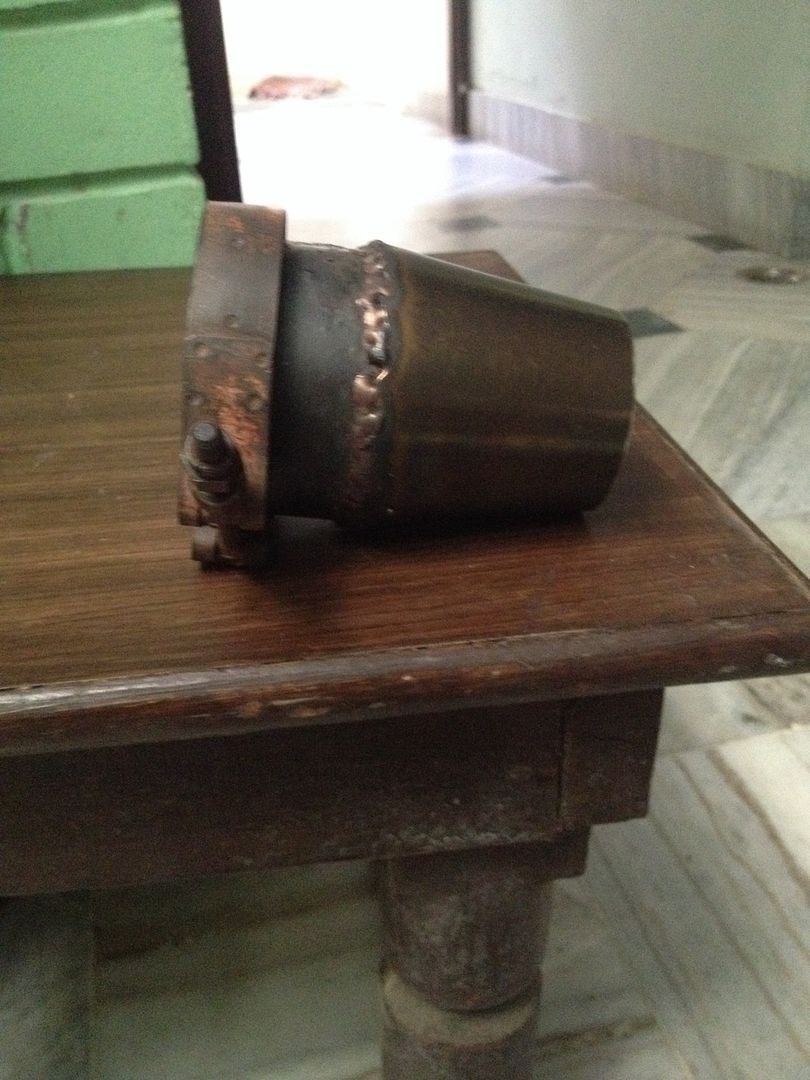 Cheers, Patty |
|
|
|
Post by racket on May 1, 2015 23:59:03 GMT -5
Hi Patty
Just mount the thermocouple in the straight section that you have , it'll be good enough
Cheers
John
|
|
|
|
Post by madpatty on May 4, 2015 13:16:11 GMT -5
Hi Guys, The test run results with the 52 mm nozzle attached.RPM P2 TOT
70500 10 589
82666 13.5 606
99500 20 651
A7100 24 707
A8000 25 744
racket- How are the temperatures? cheers,
Patty |
|
|
|
Post by racket on May 4, 2015 16:37:13 GMT -5
Hi Patty
Looking good :-)
I wouldn't be restricting it any more as we're not sure just how much temperature is being reduced across the turbine wheel , we don't want T I T to be too high .
Ideally your temp rise across the comp at 25 psi P2 - 2.7 PR would be in the vicinity of ~125 C degrees requiring ~110 C degree drop through the turbine ,.......... if this was the case then your current T I T would be ~850C , but as your T2 readings have been a bit high for the corresponding P2 your T I T might be getting closer to 900C rather than 850C .
If you want to get to 30psi P2 then the temps will rise a bit more , so play it safe and keep the jet nozzle as is until you've done more development and hopefully reduced temps a tad by other methods.
Cheers
John
|
|
|
|
Post by madpatty on May 25, 2015 12:16:47 GMT -5
Afterburner Problem
Hi Guys,
So in the background i was designing and experimenting with an afterburner.
Here is a very basic rough illustration of what i have made:-

Some pics:-
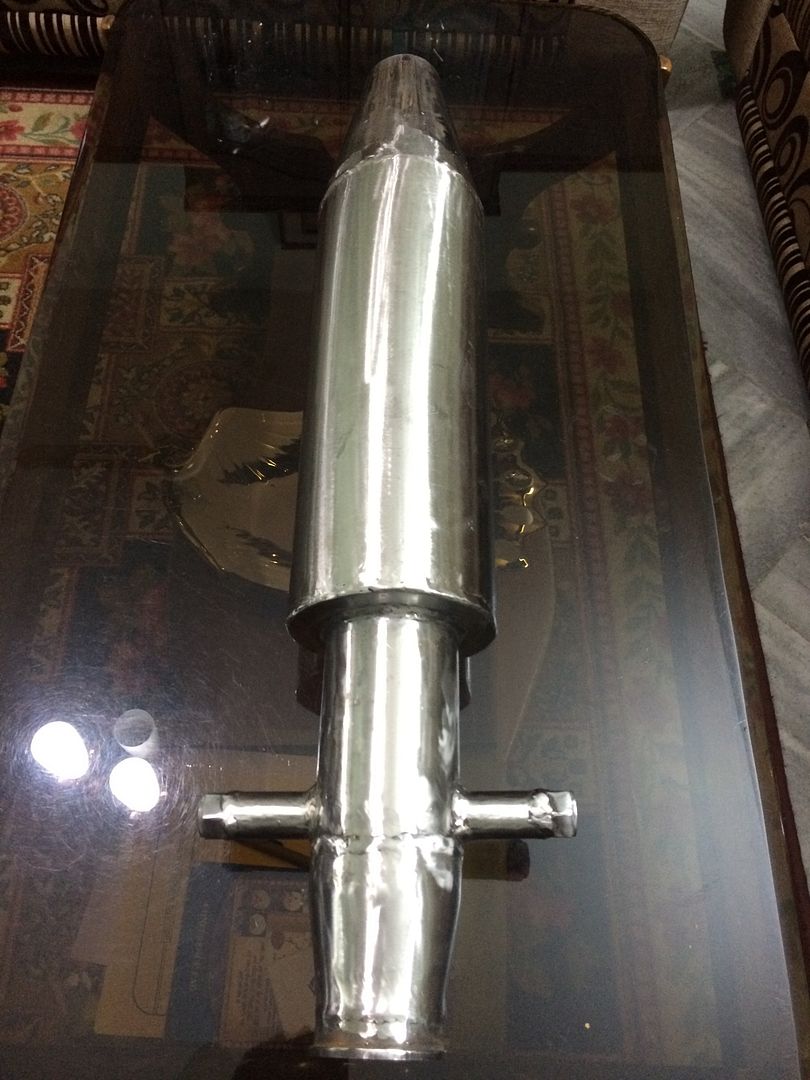


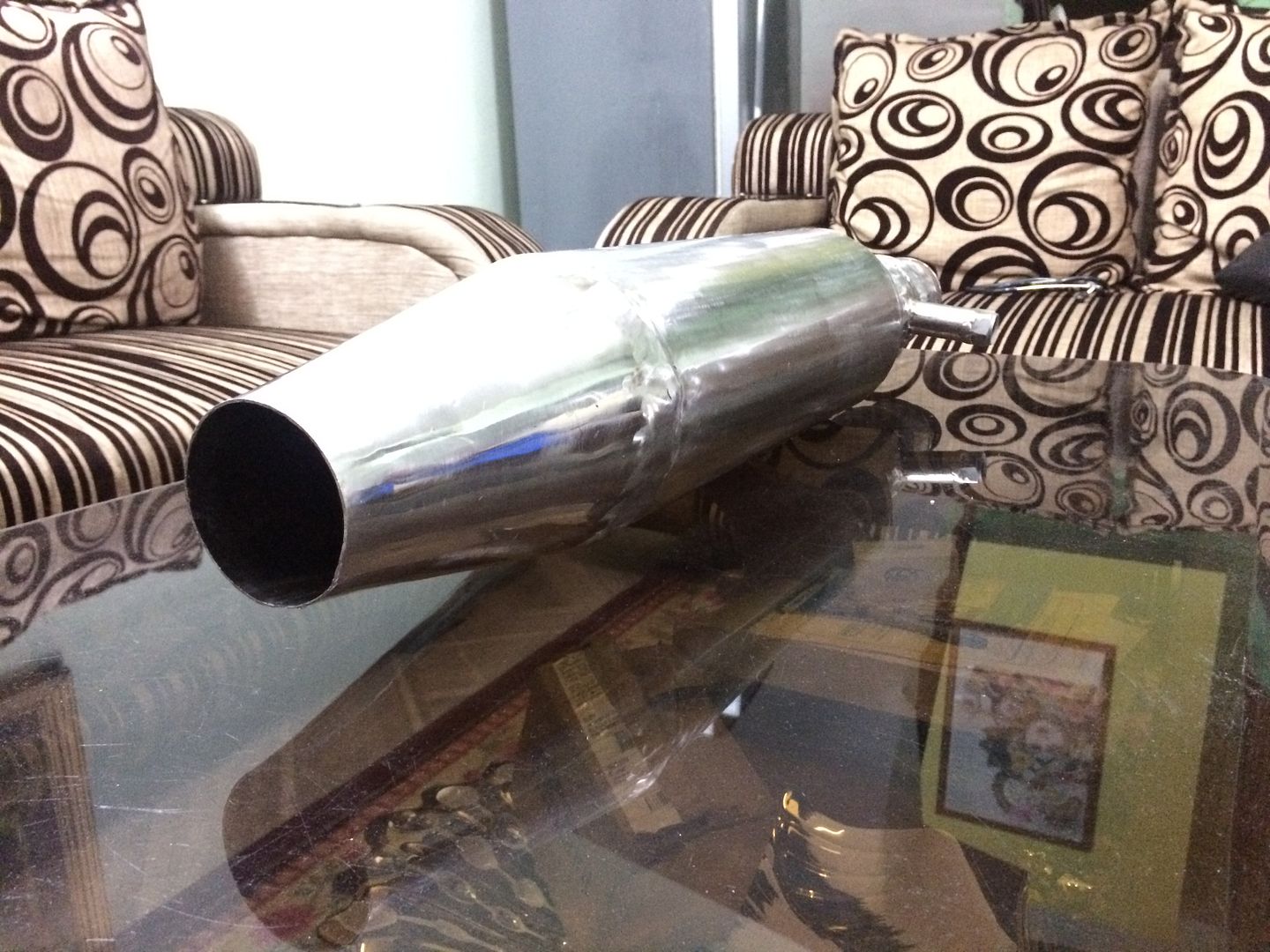
Cheers,
Patty
|
|
|
|
Post by madpatty on May 25, 2015 12:21:04 GMT -5
Afterburner Problem
And a very obvious problem.
The afterburner failed to ignite, there was big cloud of white smoke everywhere. It ignites at very low P2(3-4 Psi) and that too not consistently.
There are two injectors with 1mm hole each pointed towards the turbine providing the fuel. The spark plug is located just after the 90 degree step.
I need some help with it.
Cheers,
Patty
|
|
|
|
Post by madpatty on May 25, 2015 12:41:10 GMT -5
Some pics of the arrangement:- 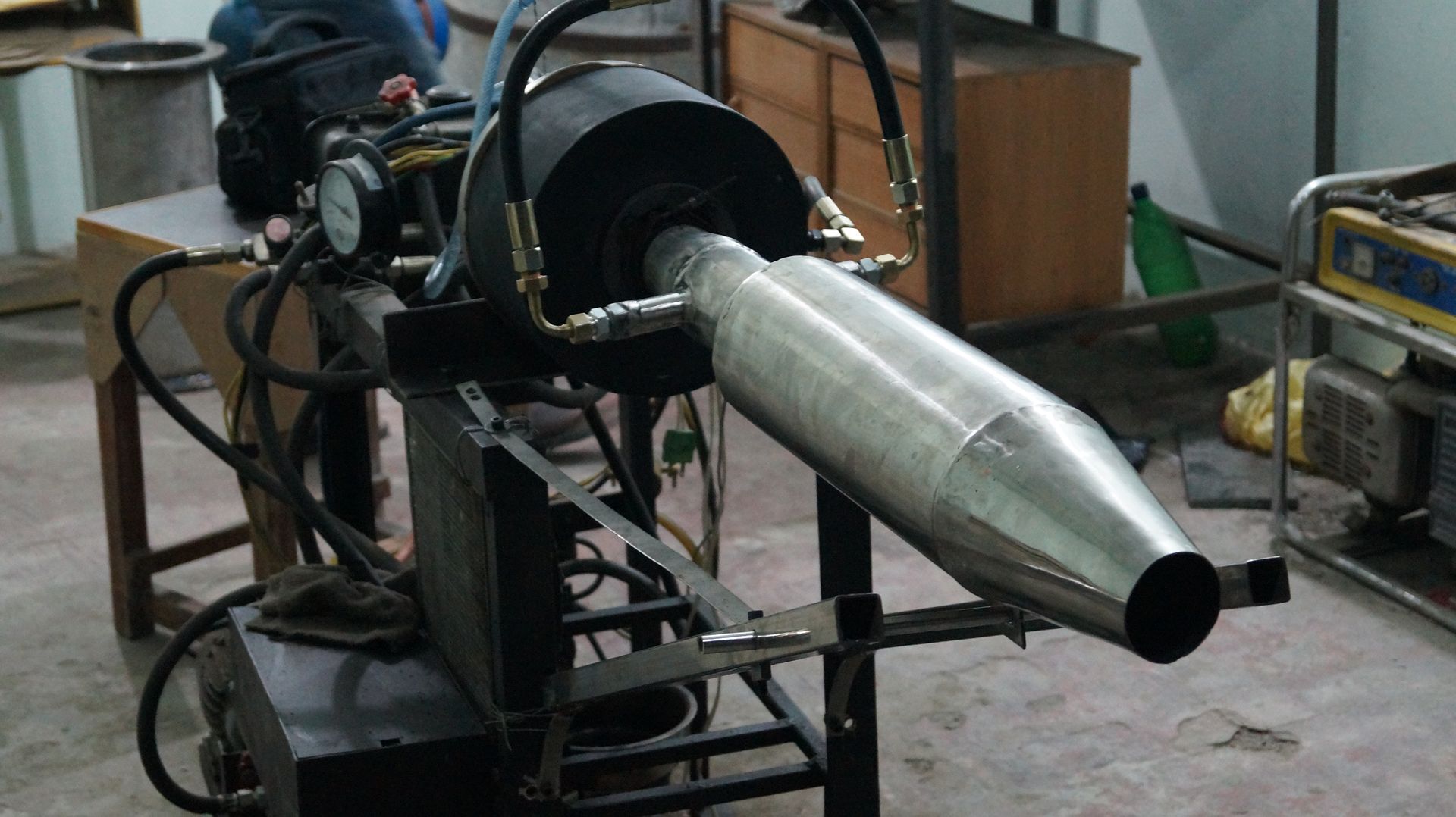 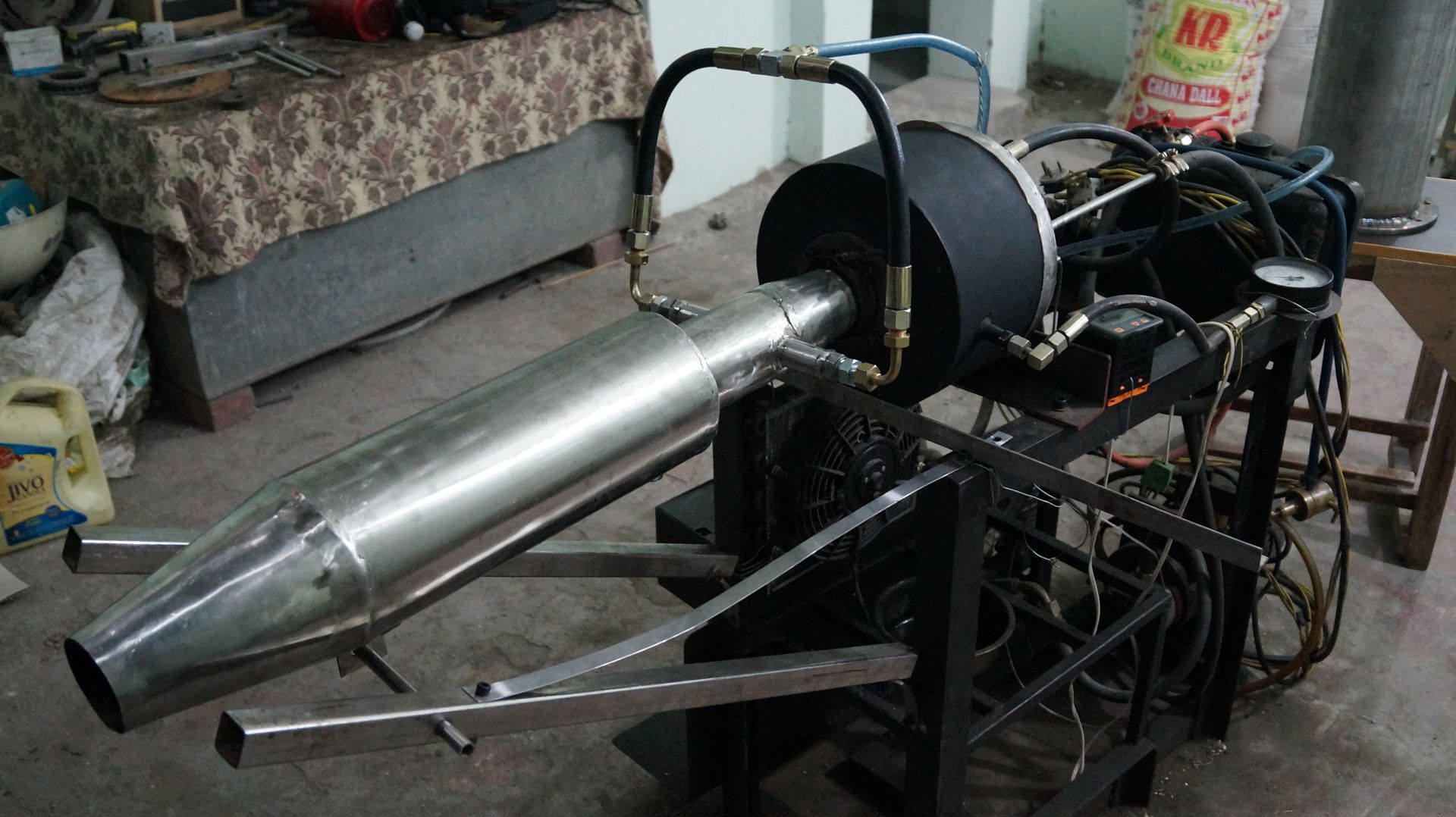 Cheers, Patty |
|